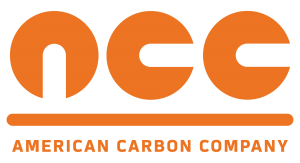Graphite anodes were the first inert cathodic protection anodes commercially available. Originally, graphite anodes had a relatively narrow application base, but with new denser graphite, and wax and resin impregnation, graphite anodes of today are much more durable and versatile.
Graphite anodes that have not been impregnated with a wax or resin treated (ACC products 10-301 and 10-401) are not suitable for most installation methods as sold. The high porosity of these anodes can allow water to infiltrate the anode interior, causing sloughing and excessive loss of material or disconnection from the power source. This reaction often will cause damage to grain boundaries and physical damage due to gas generation. In any case, these problems will likely cause an increase in consumption rate or electrical connector corrosion and failure. American Carbon does not recommend installing these bare, non-impregnated anodes without a treatment method – these anodes should be treated by the customer with some method before installation.
Anodes treated with either wax or phenolic resin are much less susceptible to the pitfalls of moist conditions. In fact, in chloride containing waters the consumption rate of wax treated graphite anodes (ACC products 10-302, 10-304, 10-305, 10-402, 10-404, and 10-405) is significantly less than in dry or fresh water applications.
From both a practical and cost effective standpoint, wax treated graphite anodes are the most commonly installed anode type. Their performance characteristics in most common installation environments are listed below. As always these rates of consumption vary with current density, environment, and method of installation.
| Installation Environment | Current Density (Amps/SF) | Consumption Rate (lb/Amp/Year) |
| Fresh Water (Not Recommended) | 0.23 – 0.27 | 0.22 – 0.66 |
| Sea Water | 0.9 | 0.66 – 1.1 |
| Carbonaceous Backfill (Recommended Installation) | 1.0 | 0.22 – 0.66 |
If you wish to learn more about applications for American Carbon graphite anodes, please Contact Us.
